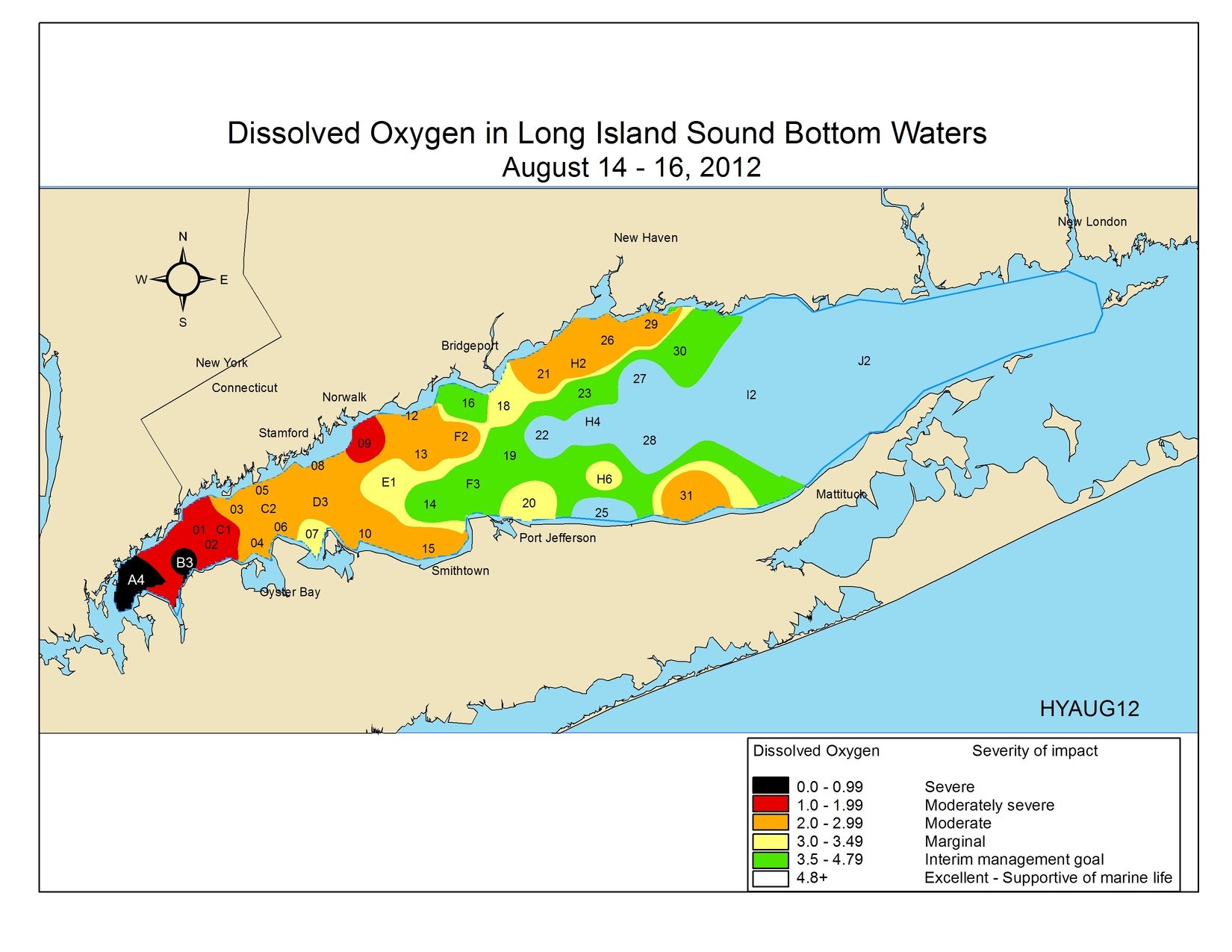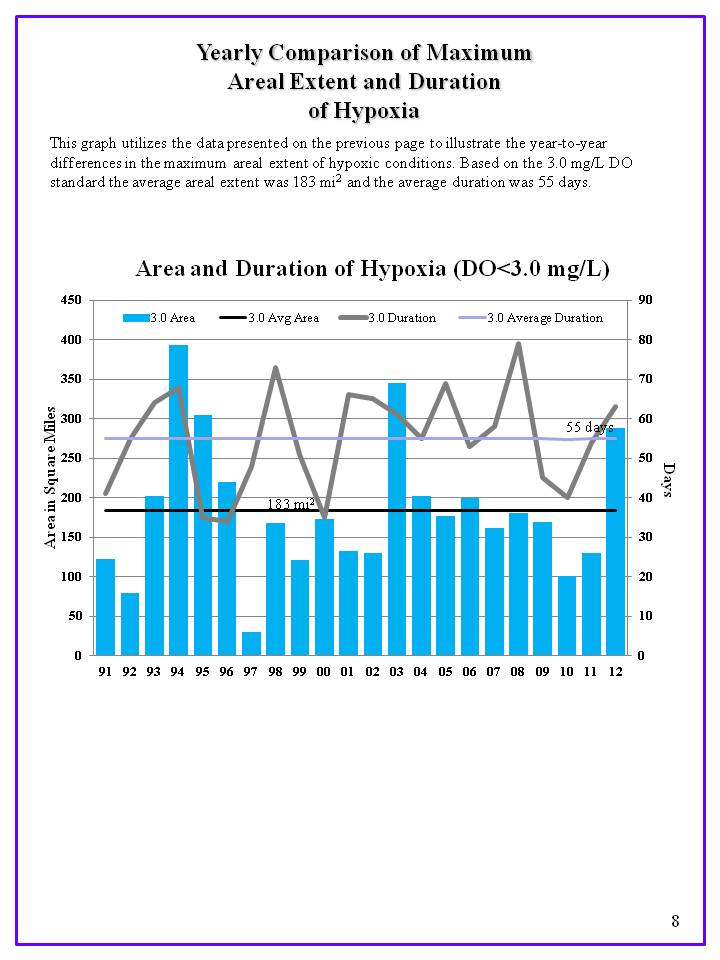The recently released year-end water quality report for Long Island Sound confirmed what seemed obvious in August: when measured by hypoxia – the annual drop in dissolved oxygen caused by nitrogen in treated sewage – the summer of 2012 was awful.
It’s as clear as the Sound’s waters are murky, presented in the report’s charts and graphs, which were compiled by the Connecticut Department of Energy and Environmental Protection as part of its 2012 Season Review.
Hypoxia was widespread and it was intense. More than 20 percent of the Sound’s 1,320 square miles were hit by low dissolved oxygen, and much of the Sound off Westchester had virtually no dissolved oxygen in mid-August.

That’s a problem because hypoxia leads to habitat loss and physical harm to marine life. Estuaries like the Sound are among the most biologically productive ecosystems on the planet but when dissolved oxygen levels are low, fish, lobsters, crabs and other marine life can no longer live there. They flee, or if they can’t flee, they are physically harmed by the environmental stress. In a worst case, when dissolved oxygen falls to zero quickly, they die.
Along with collecting water quality data, the DEEP has been trawling for fish, keeping records of what it catches, and correlating those records with the water quality data. As a result, researchers know the extent to which the Sound’s habitat is impaired as oxygen concentrations drop, based on the corresponding drop in fish biomass (biomass being the total weight of all the fish caught).

The drop starts when when oxygen is between 3 and 3.99 milligrams per liter, but it’s not huge – only 4 percent. The fall-off from there is bigger: between 2 and 2.99, the reduction in biomass is 41 percent. When it oxygen levels are between 1 and 1.99, the reduction is 82 percent. And when oxygen falls below 1, the reduction is total – there are no fish.
So a key threshold seems to be 3 milligrams per liter. When D.O. falls below that, fish biomass drops dramatically.
With that in mind, let’s look at conditions in 2012.

Graph: CTDEEP
First, 288.5 squares miles of Long Island Sound had dissolved oxygen concentrations below 3, and hypoxia was observable for 63 days. Using square miles as the criterion, 2012 was the fourth worst year on the Sound since consistent records started being kept, in 1991.
In the middle of August, hypoxia had its grip on all of the Sound between Westchester and Nassau, on Suffolk County as far east as Smithtown Bay, and on Fairfield County as far east as the town of Fairfield, with large pockets from Milford to Branford in Connecticut and off Wading River on Long Island.
It was only the third time since 1991 that the water off Branford saw dissolved oxygen concentrations below 3. In other words, 2012 wasn’t just a typical year in which hypoxia was confined to the western Sound. Hypoxia was a central Sound phenomenon too.
Sixty-seven square miles of the Sound were affected by severe hypoxia – dissolved oxygen below 2. Some areas (basically all of Westchester’s waters) had concentrations that low for 23 days. Again using square miles as the criterion, 2012 was the sixth worst year since 1991.
Eighteen square miles of the Sound saw dissolved oxygen fall below 1 – the threshold for anoxia, which means essentially no oxygen, and no fish either. That area encompassed an arc of water from New Rochelle and Larchmont across to Sands Point, and another circle-shaped area halfway across the Sound off Mamaroneck and Rye.
The 18 square miles made 2012 the seventh worst year for anoxia since 1991. The big surprise was that anoxia had almost seemed a thing of the past: in 2007, 2009, 2010 and 2011, dissolved oxygen levels never fell below 1.
Interestingly, among all the DEEP water quality measurements, two were actually better than normal in 2012 – though only slightly better. We’ll look at those data in a subsequent post. We’ll also look at why hypoxia was so severe. The answer probably will take us back to the winter of 2012.
So in summary, 2012 was the fourth worst summer for hypoxia, in square miles, since 1991; and it was the first time in four years that any part of the Sound suffered from anoxia. The result was that in August fish populations in the deeper parts of the Sound were reduced at least by half and in the waters off Westchester by a lot more than half. What we said back in August still holds true: it was an almost shockingly bad month.
Posted by Tom Andersen, NY program and communications coordinator for Save the Sound. Tom is also the author of This Fine Piece of Water: An Environmental History of Long Island Sound.

3 thoughts on “Season Review: Hypoxia Was Widespread and Intense in 2012”
Comments are closed.